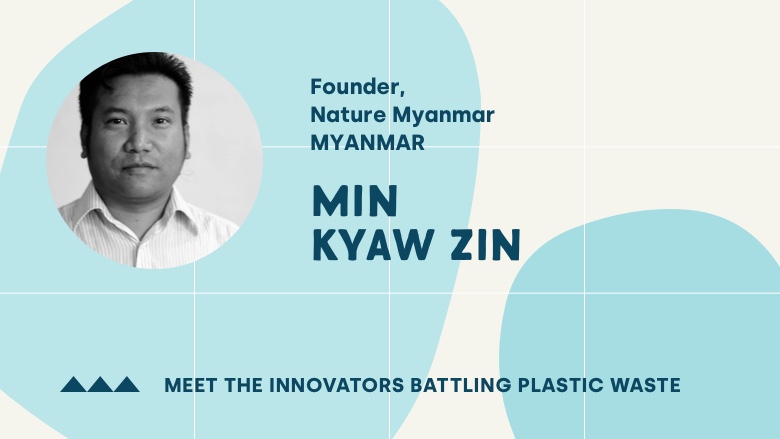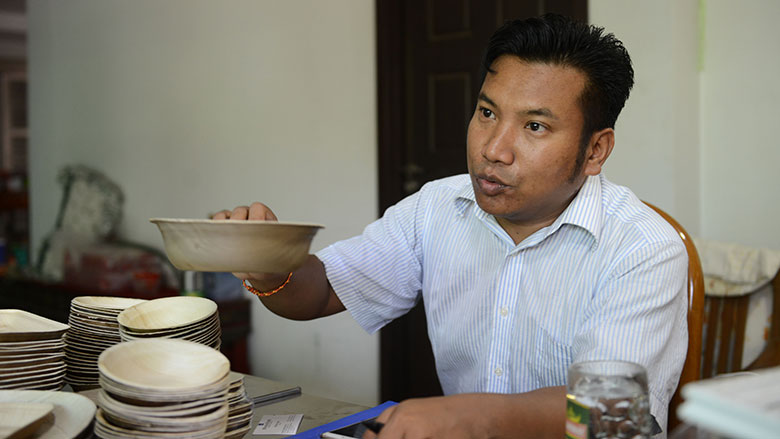After learning how to create products using banana leaves, Min Kyaw Zin worked to scale up and adapt them to replace plastic and Styrofoam use. Today, he creates biodegradable goods and packing made from betel farm by-products, and is helping to reduce plastic use in Myanmar.
Tell us about yourself, and your work.
My name is Min Kyaw Zin. I attended the Yangon University of Foreign Languages and Monywa Economic University in Sagaing Region, where I graduated with a master’s degree in Business Management. Prior to establishing Nature Myanmar, I ran small businesses, from a restaurant to a career developing a training center. In November 2018, I co-founded Nature Myanmar with my friend Ko Than Zaw Oo to create ecofriendly products. Our vision is to provide green solutions to change people’s habit of using plastic and non-degradable materials.
How is plastic waste an issue for oceans and waterways in Myanmar?
Plastic is a huge problem in Myanmar. Locally, people have been using it for decades without proper waste management. Plastic and other non-degradable products have been piling up in waterways and everywhere, not only in urban areas but also in rural areas.
When did you first get involved in trying to address this issue?
The issue of plastic waste has always been on my mind. The idea came to me while watching a video on Youtube back in 2017 on how to create disposable products using banana leaves. I was inspired by this and started thinking of ways to adapt it locally. In Myanmar, everyone uses plastic and Styrofoam boxes, because they have no other option. I had been traveling to Tanintharyi Region frequently, and there I found a large area of betel farms. It was there where I got the idea to use Areca sheath for disposable goods and packaging. I found a partner who shared my interest and vision. That’s how the project got started.



